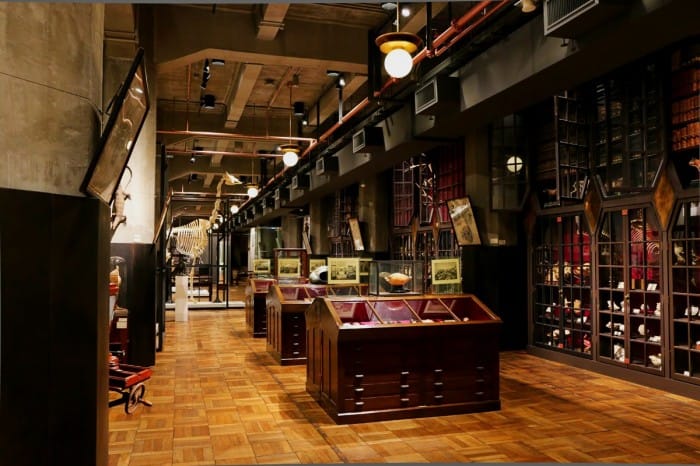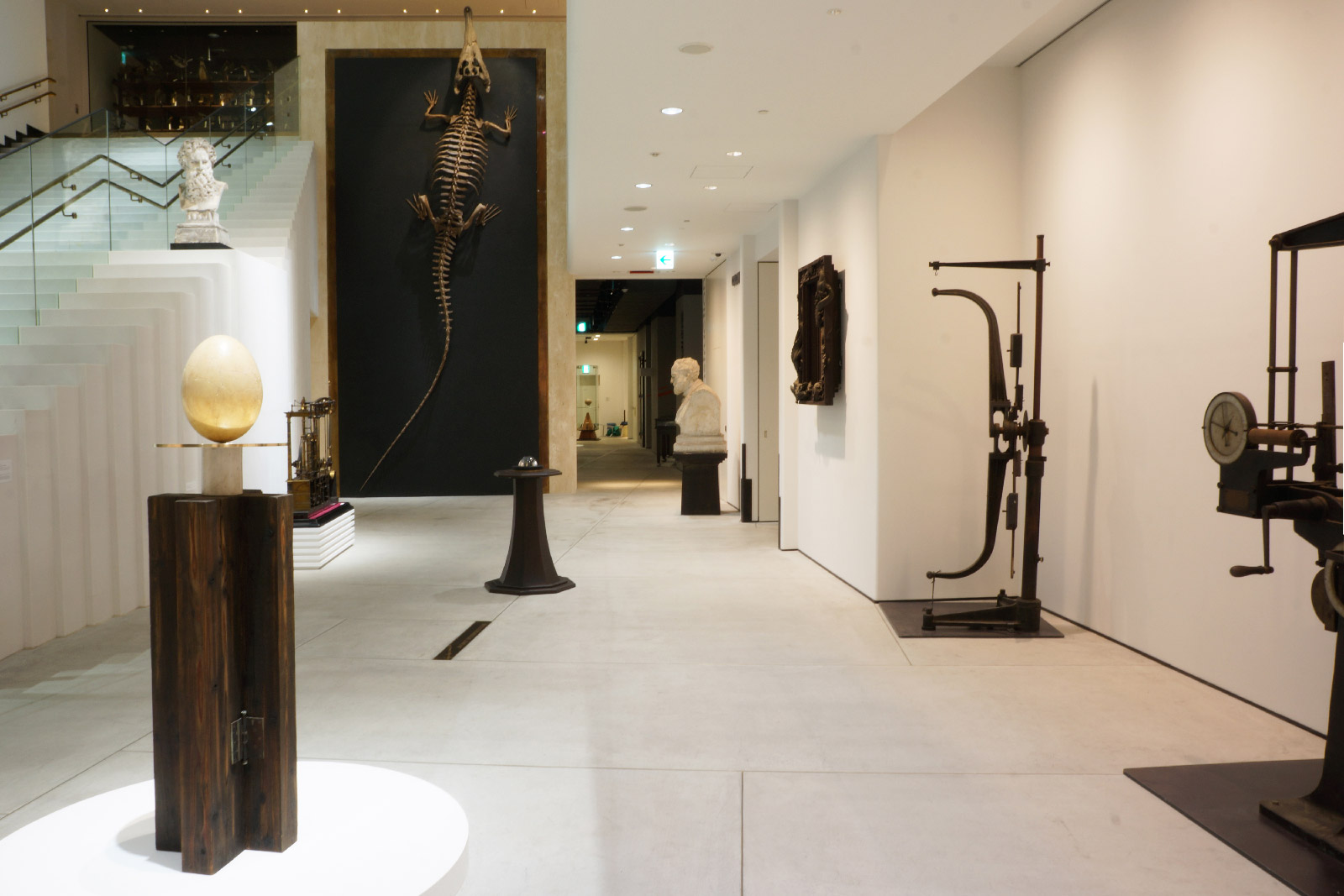b
Intermediatheque
Intermediatheque is a gorgeous exhibition space at the JP Tower in Tokyo which feels like a cross between a natural history museum and a yesteryear’s cabinet of curiosities. Assembled by the University of Tokyo, the collection is filled with marvelous displays of hundreds of animal skulls, bones, and skeletons, specimens, taxidermy, and models, and includes such items as an Ancient Egyptian sarcophagus, temple fragments that survived the atomic bomb in Hiroshima, 19th-century machinery, typewriters and microscopes, beautiful rocks and minerals, preserved two-headed turtles, and a whale’s jawbone. It is comprised of both vintage and newer acquisitions. For a lover of curiosities like me, it’s a wonder. Besides the interesting specimens, all the display cases themselves are beautifully done. I saw some very lovely and notable bell jars. The aesthetic arrangement of the exhibitions is striking in its own right. The whole space is a unique hybrid of vintage and modern which feels simultaneously spacious, luxe, elegant, eccentric, and quaint, all contributing to make it one of my most memorable experiences in Tokyo. As a plus, admission is free.

